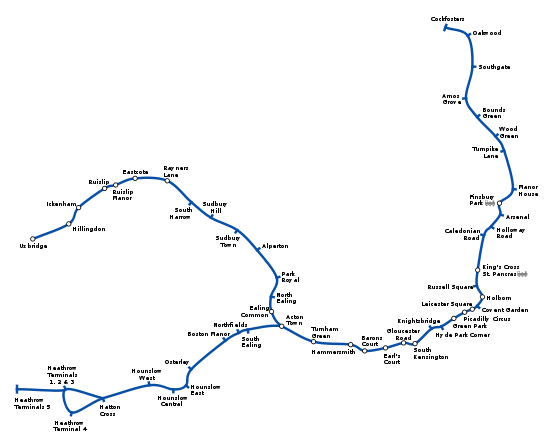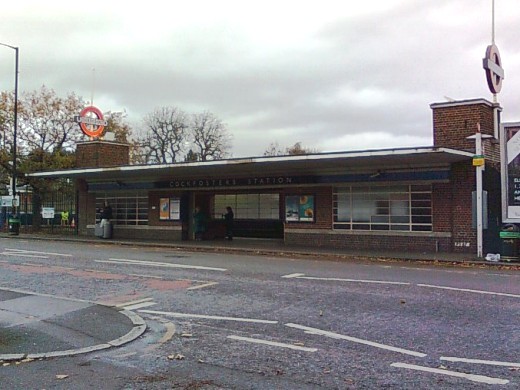
Cockfosters station, the northern terminus of the Piccadilly line opened in 1933, the last on the extension of the line from Finsbury Park. The station building is a typical Charles Holden design in modern European style using brick, glass and reinforced concrete. The towers at either end are ventilation shafts. It is now a grade II listed building.
|
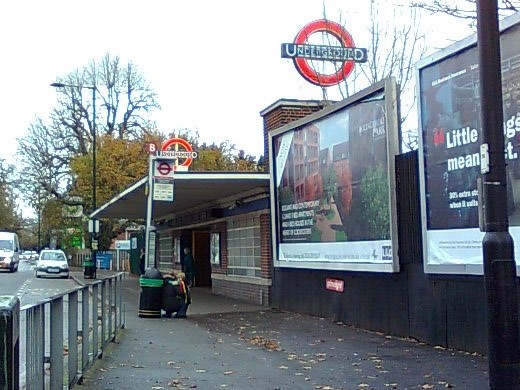
A sideways view of the station building shows the roundels on the roof to be of the 1930s style.
|
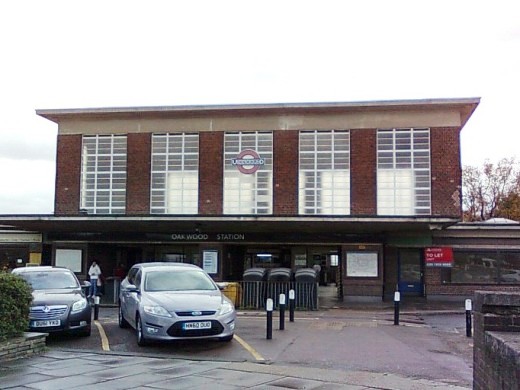
Oakwood station opened in 1933. It was called Enfield West until 1946. The station building is of similar style to the previous one on the line.
|
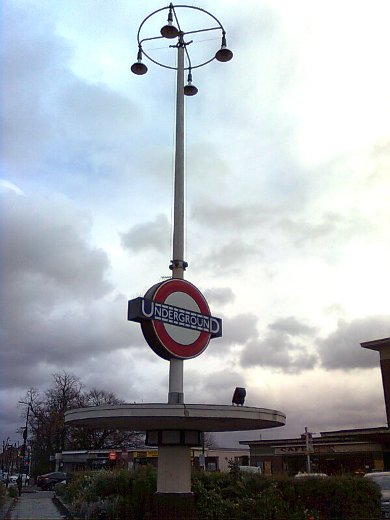
A 1930s roundel on a pole with lights above stands on the station forecourt.
|
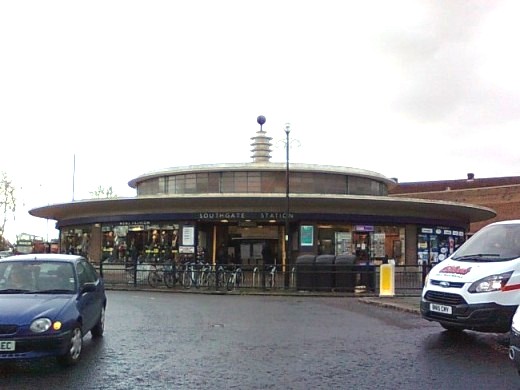
Southgate station from a distance shows the circular form with decoration on top.
|
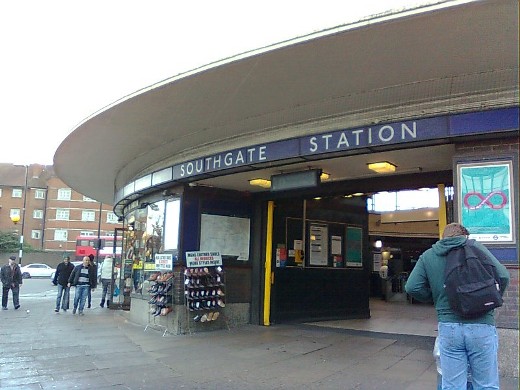
The station building is another Charles Holden design but this time in Art Deco / Streamline Moderne style.
|
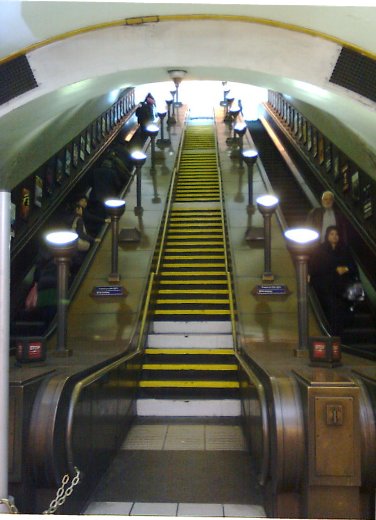
Inside the station the escalators with original column uplighters. The escalators have been refurbished using brass top and side panels in order to keep the style of the original. Notice also the lack of modern advertisement panels along the walls. The escalators are often used on the set of period drama films.
|
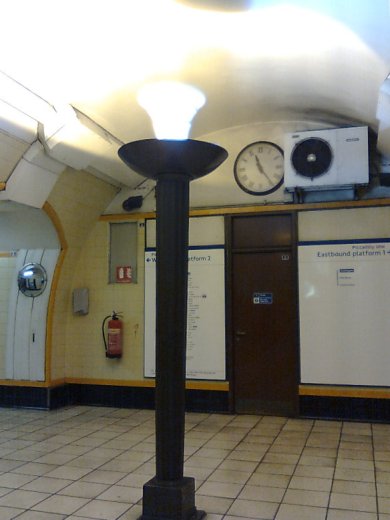
A brass standard lamp in the area at the bottom of the escalator. It may be noted that the platforms are labelled east and west as is the convention on the line even though the line here actually goes north and south.
|
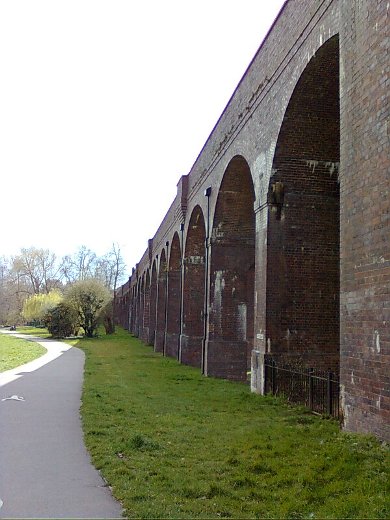
On the way to the next station the road goes under a viaduct carrying the track. It goes over the road and through Arnos Park.
|
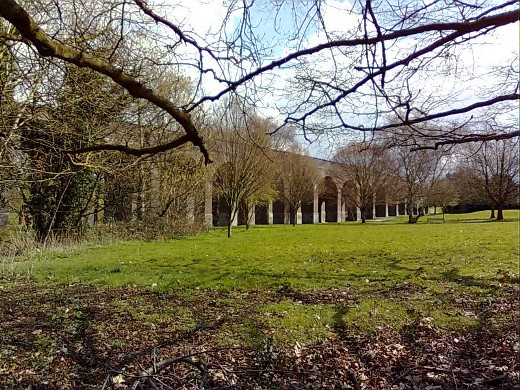
Looking back from the road into the park showing some of the 34 arches which make up the viaduct.
|
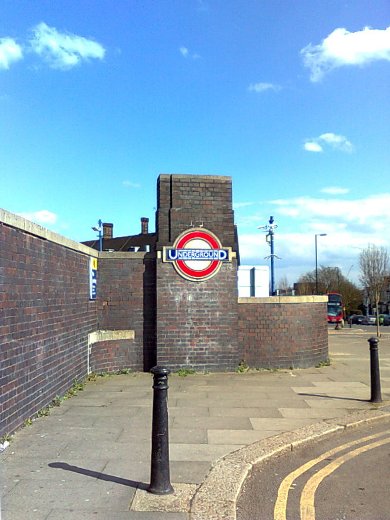
The next station building stands in a lay-by with a large roundel on the wall at either end.
|
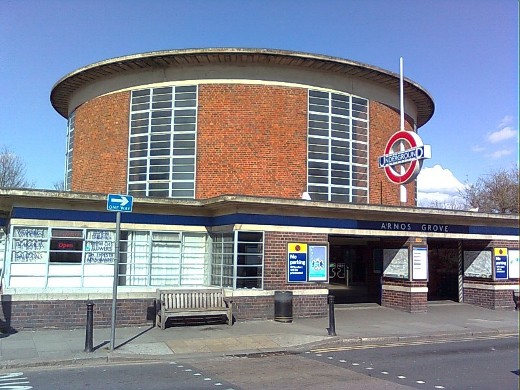
Arnos Grove station, a circular building in Modernist style, opened in 1932. It was refurbished in 2011 with many of the its original features retained. It is the last surface station before a long tunnel section.
|
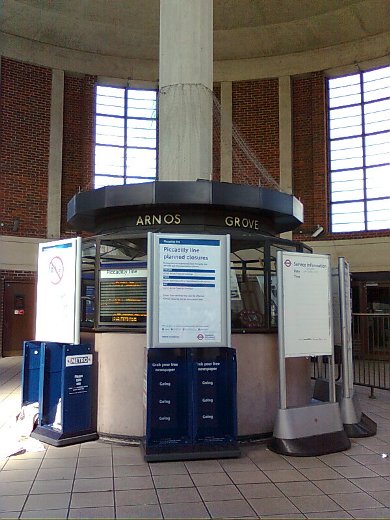
The original ticket office in the centre of the booking hall houses a small exhibition, albeit rather sadly presented.
|
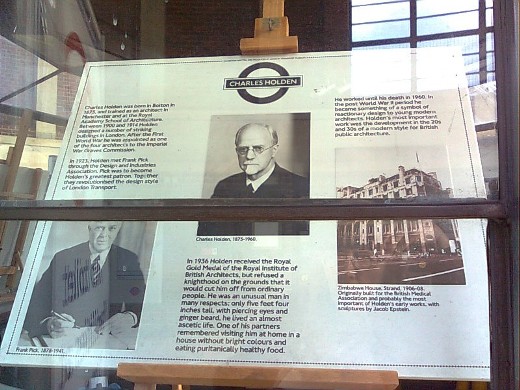
One of the information stands in the exhibition. This one giving details of Charles Holden's life and work. All the stations on this end of the line were designed by Holden.
|
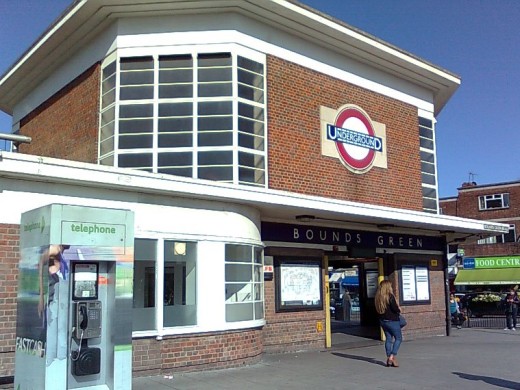
Bounds Green station with its distinctive octagonal booking hall like the previous stations was opened in 1932, and more recently refurbished with original features retained. The station was used as an air-raid shelter during the second world war where people slept on the stairs between the escalators as well as on the platforms. It was however bombed in 1940 when the north end of the westbound platform was hit, the tunnel collapsed and 19 people killed.
|
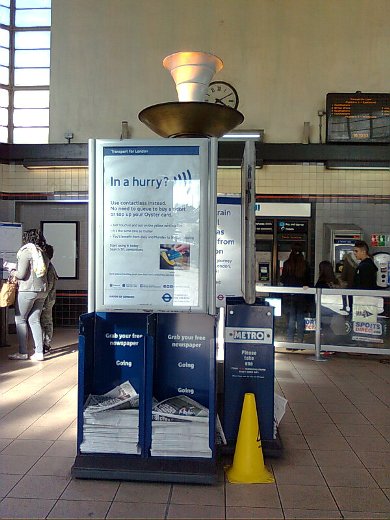
An original brass standard lamp in the ticket hall showed off in similar sad manner to the lovely old feature in the previous station.
|
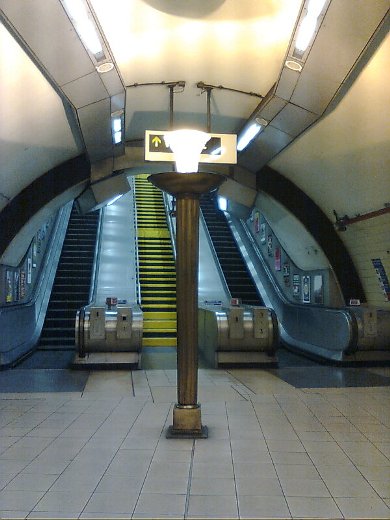
One of the lamps at the bottom of the escalators, this time shown at its best.
|
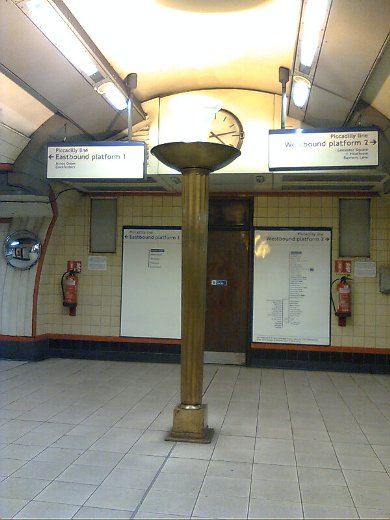
Another lamp in the area between the two platforms.
|
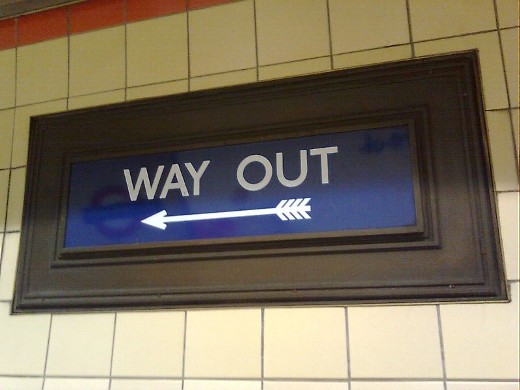
An aesthetically pleasing original 'way out' sign on the platform.
|
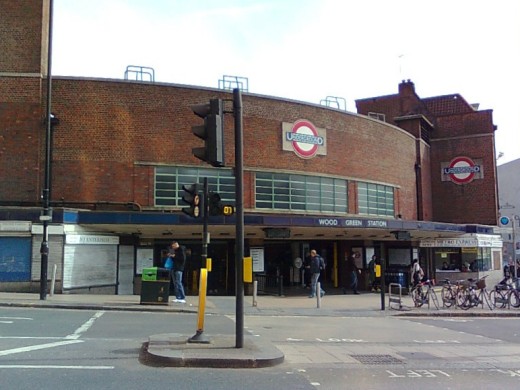
Wood Green station, opened in 1932, with its curved frontage flanked by two ventilation towers which were added later. In 1976 an IRA bomb exploded on an empty train here with one passenger standing on the platform being injured by flying glass.
|
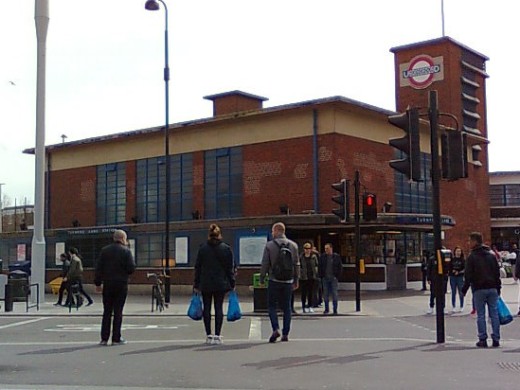
Turnpike Lane station, a square station building with two ventilation shafts.
|
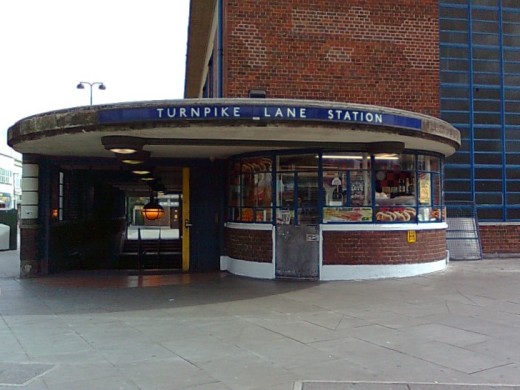
The curved entrance at the right hand end of the building.
|
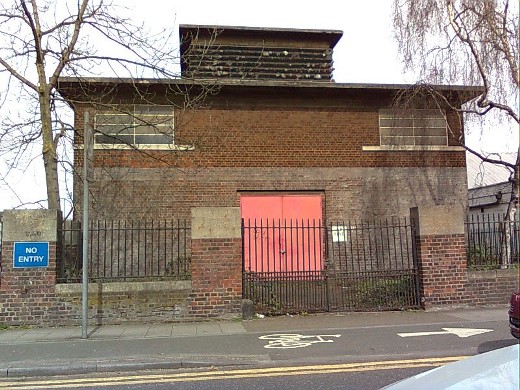
Between Turnpike Lane station and the next station stands a small building now used as a ventilation building. Plans to build a station here called St Ann's never came about and this is all that remains.
|
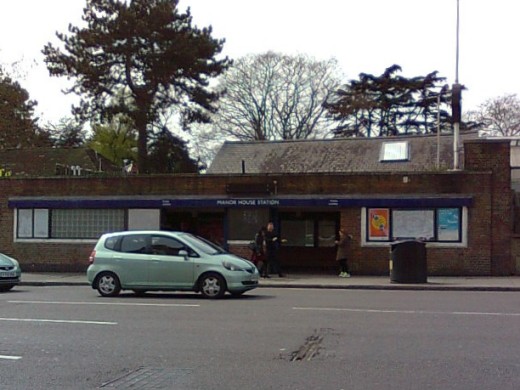
Manor House station. In addition to the station building entrance it was built with no fewer than eight subway entrances, two of which led directly to tram services. These two were removed completely in 1951 while the other six are still in use.
|
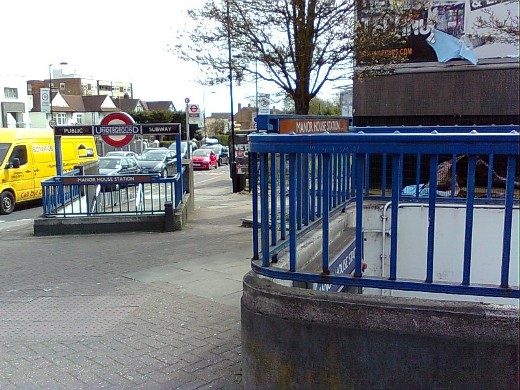
Two of the subway entrances to the station.
|
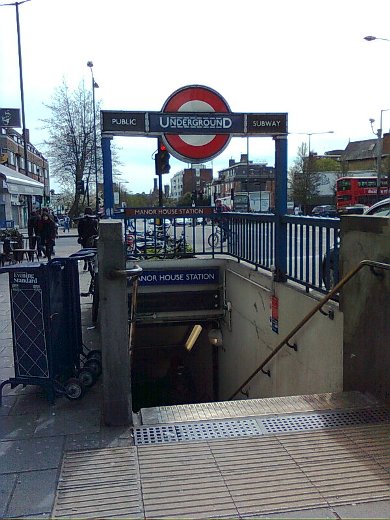
A third entrance on another corner of the crossroads.
|
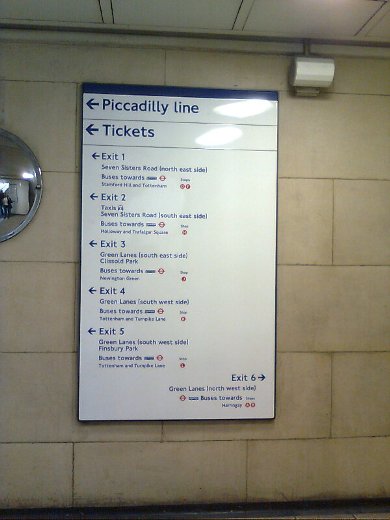
In the subway tunnels, a sign giving details of all six exits.
|
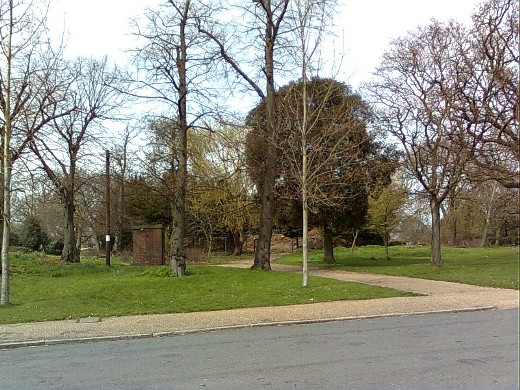
The walk to the next station takes us through the lovely Finsbury Park.
|
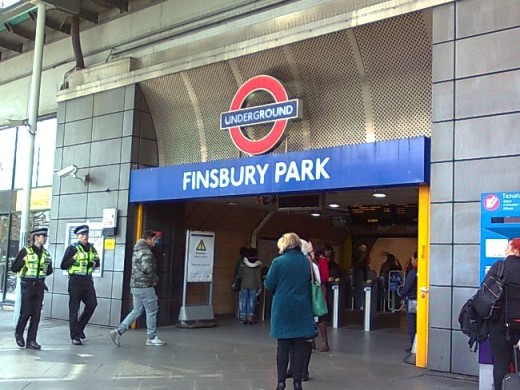
Finsbury Park station's main entrance at Station Place. There are two other entrances, one further down on Seven Sisters Road and one in Wells Terrace.
|
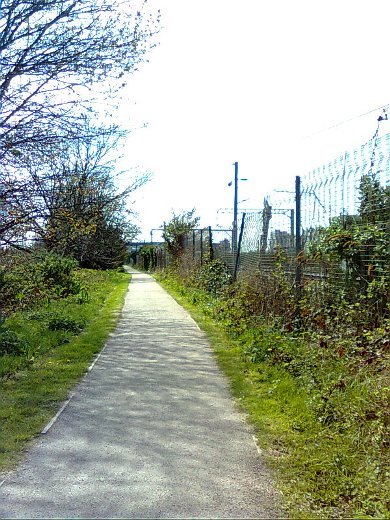
Over the road from the station steps take us up to a path leading to the Gillespie Park nature reserve. The National Rail track can be seen through the fence alongside the path.
|
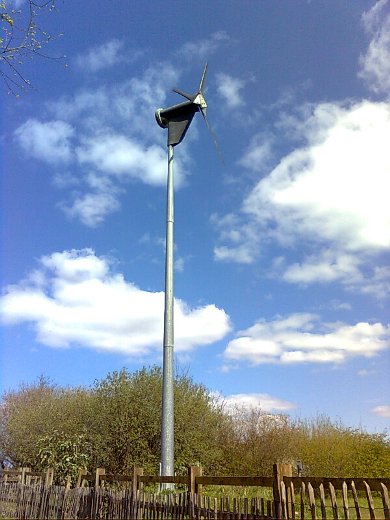
A notice at the foot of this wind turbine tells us that it was installed by Islington Council in 2007 as part of its programme of action to tackle climate change.
|
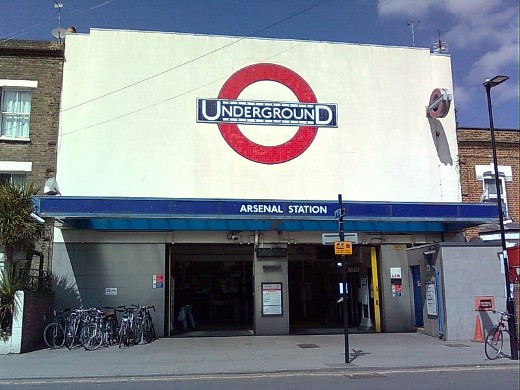
Arsenal station, the only station on the network to be named after a football club, was opened in 1906 as Gillespie Road and the name can still be seen on the platforms. The original station building was a typical Leslie Green building. It was rebuilt in the 1930s and given a far less interesting appearance.
Despite it servicing a deep level line, the station has neither escalators nor lifts, the approach to the platforms being by a sloping passageway.
|
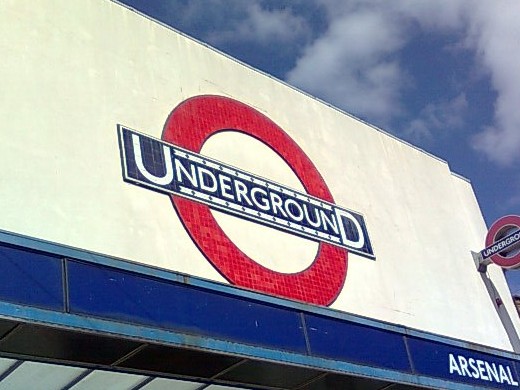
A close up of the roundel above the entrance shows it to be made in the style of a mosaic.
|
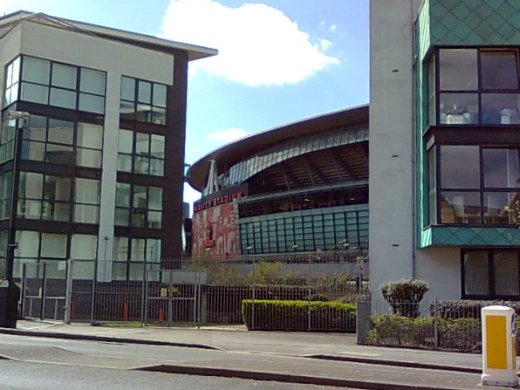
On the way to the next station Arsenal's football stadium can be seen between the houses.
|
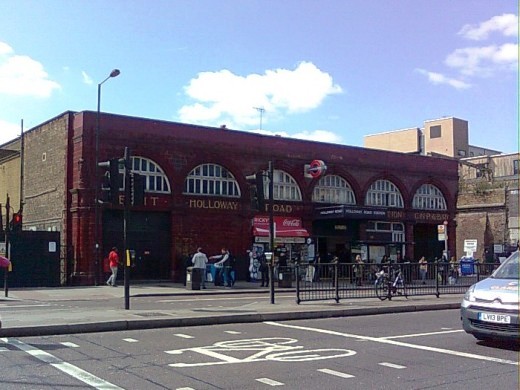
Holloway Road station. Along with others on this stretch of the line, the Leslie Green designed station was opened in 1906.
|
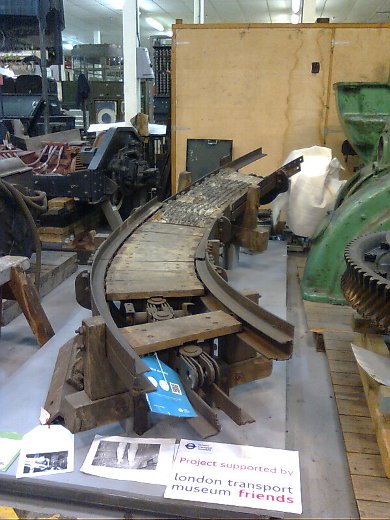
The remains of an experimental spiral escalator was found in the base of a lift shaft at the station. This piece is now kept in the Transport Depot in Acton.
|
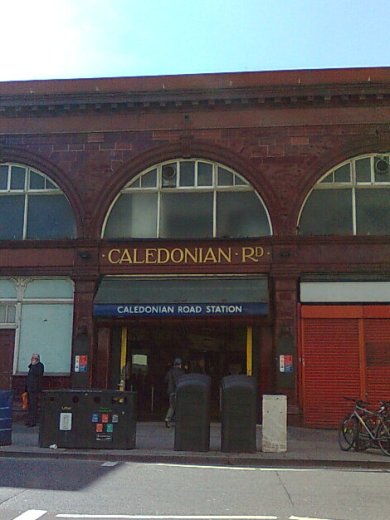
Caledonian Road station.
|
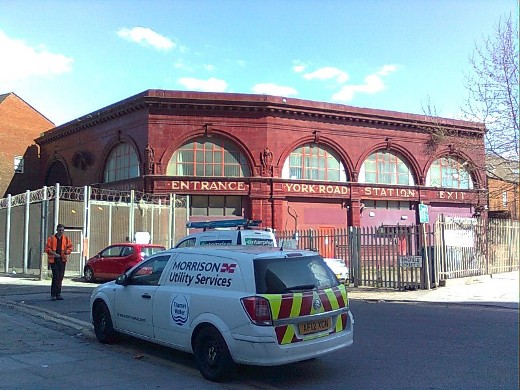
On the way to the next station stands this lovely example of a Leslie Green station building. York Road station was in use between 1906 and 1932. What remains of the platforms can be seen from passing trains.
|
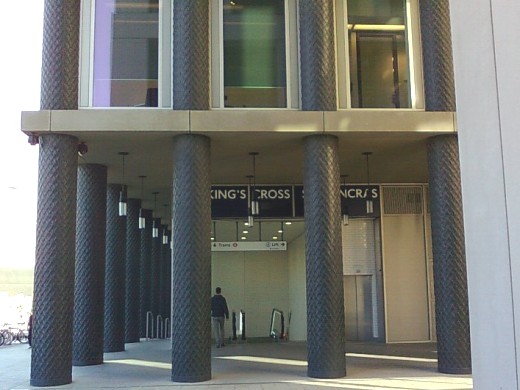
King's Cross St Pancras station's newest entrance. The station is the biggest interchange station on the London Underground serving six tube lines as well as two National Rail stations. The first Underground station at King's Cross opened in 1863 and has been rearranged several times since. It has the shortest lift shaft on the network.
|
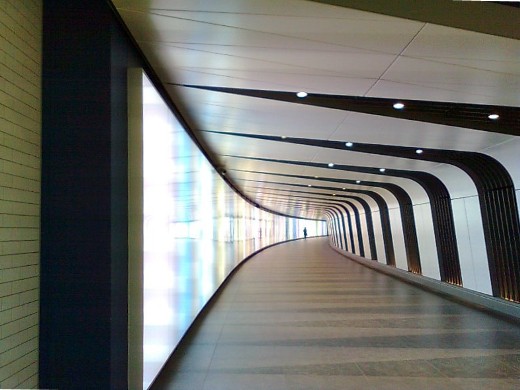
The entrance leads to a 90 metre long tunnel with the left hand wall made of coloured lights.
|
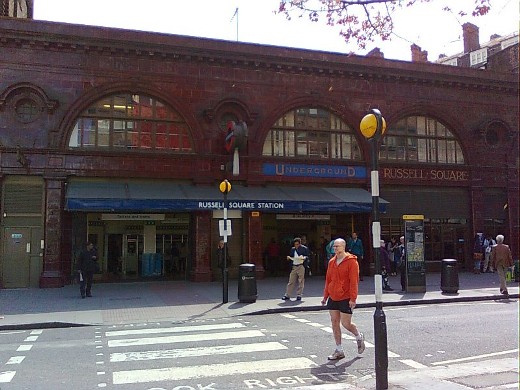
Russell Square station, designed by Leslie Green and opened in 1906. The station has no escalators, the platforms being reached by lift or 171 steps.
|
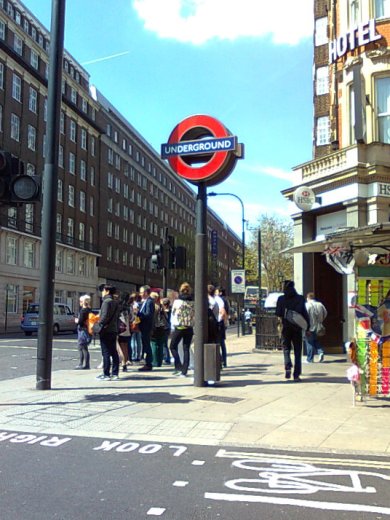
At the end of the road a lone roundel marking the way to the station.
|
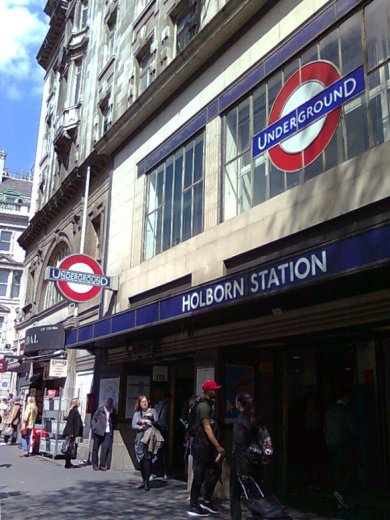
Holborn station, the only interchange station between the Central and Piccadilly lines on the network. Until 1994 Holborn was the terminus for the short Aldwych branch line. The platform used for this still stands in good condition, with a train kept in the tunnel nearby. The platform is used occasionally for filming.
|
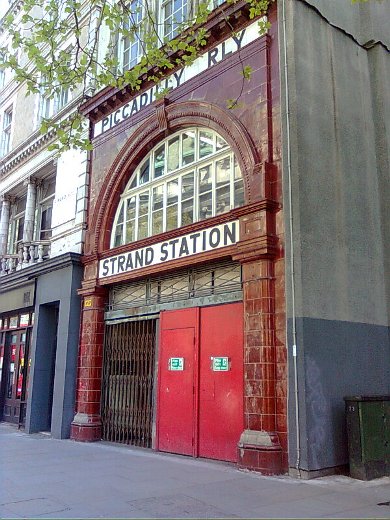
The disused Aldwych station was opened in 1907 and closed in 1994. As the picture shows it was originally named Strand with the name being changed in 1915. A canopy was then built over the entrance bearing the new name of Aldwych.
|
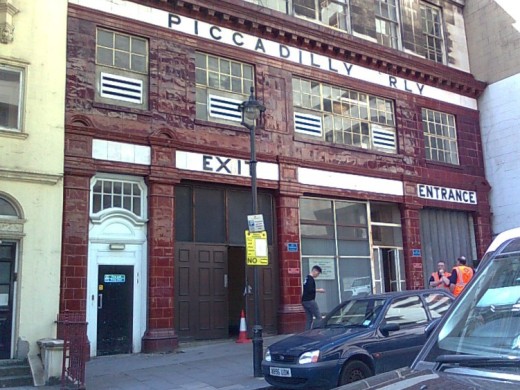
Round the corner another entrance to Aldwych station. The station was closed during the war and used as an air raid shelter. It is now used for filming and for tours. A train is kept on the line.
|
|
|
To be continued
|
